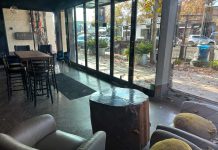In September, the Wildlife Education and Rehabilitation Center
received a call reporting what appeared to be an injured turkey
vulture in a Morgan Hill field. When the caller went back to locate
the bird so it could be rescued and brought to WERC, he found that
it had disappeared.
In September, the Wildlife Education and Rehabilitation Center received a call reporting what appeared to be an injured turkey vulture in a Morgan Hill field. When the caller went back to locate the bird so it could be rescued and brought to WERC, he found that it had disappeared.
Imagine WERC’s surprise, a week later, to find the young turkey vulture hanging around WERC’s large flight enclosure, inside which resides “Pacheco,” an older turkey vulture being rehabilitated for an injured wing. The juvenile (his head and beak are still grey) must have hopped and “turkey-trotted” for over a mile to find WERC!
For two weeks, the young vulture could be seen every morning either on top of the enclosure, perching in a low tree nearby or walking around the neighbor’s field. On closer look through binoculars, it was apparent that its wing was awkwardly bent, though the bird was able to fly short distances. Was this vulture trying to get itself admitted to WERC’s outstanding rehabilitative care unit? Was it just hungry and salivating over Pacheco’s tasty food? Or both?
How to catch the vulture so it could be examined closely and given treatment, if necessary? Vultures are smarter than they look. For two weeks, WERC improvised different methods of capture, which failed due to the alertness and keen senses of the wily bird. Finally, WERC volunteers were able to confine the vulture. A follow-up veterinary examination confirmed a healed fracture of the left wing, possibly caused from a vehicle collision while the bird was eating on the road. The vulture was also thin and starving and hungrily gobbled up the rodents that were offered.
The young vulture will be kept under close observation at WERC through the winter. Later re-evaluation will determine whether it has regained the ability to soar high in the sky, allowing it to search far and wide for food. It is likely that this vulture is the same youngster that was seen soaring over WERC with both its parents several months ago, and what a joyful occasion it would be to release it, healthy and well-fed, back to its family. But if the injury to its wing has caused permanent damage and the vulture can’t be released back to the wild, WERC believes that the bird’s youthfulness and distinctive personality will make it an outstanding candidate as an educational animal.
Turkey vultures are fascinating creatures. With their red, almost-naked head and turkey-like strut on the ground, they appear similar to wild turkeys, hence their name. They are a very social, non-aggressive bird and large communal groups can be found roosting in trees and gliding in thermals (warm, rising air) for hours at a time over hillsides. These magnificent groups of vultures in the air are called a “kettle,” because as they rise and soar in circles, they resemble water boiling in a pot.
Almost the size of an eagle, with a 6-foot wingspread, turkey vultures can often be seen perching atop a telephone pole with wings fully extended, called the “horaltic pose.” This behavior allows the warmth of the sun to kill bacteria on their body, an important habit due to their dietary preferences.
Turkey vultures are truly beneficial animals. Their scientific name is Cathartes aura, which means “cleansing breeze.” They act as nature’s supreme clean-up crew, ridding the environment of disease-carrying road-kill and other carrion. Though similar to raptors, turkey vultures are more closely related to storks and don’t kill prey and can’t carry off food in their talons. They are scavengers and dine on animals that have died naturally or have been killed by other predators or vehicles.
Unlike almost all other birds, vultures have an exceptionally keen sense of smell and can detect freshly dead food from a distance. But have no fear – regardless of what you see on Saturday morning cartoons – vultures do not circle over people or animals dying on a desert island or anywhere else.














